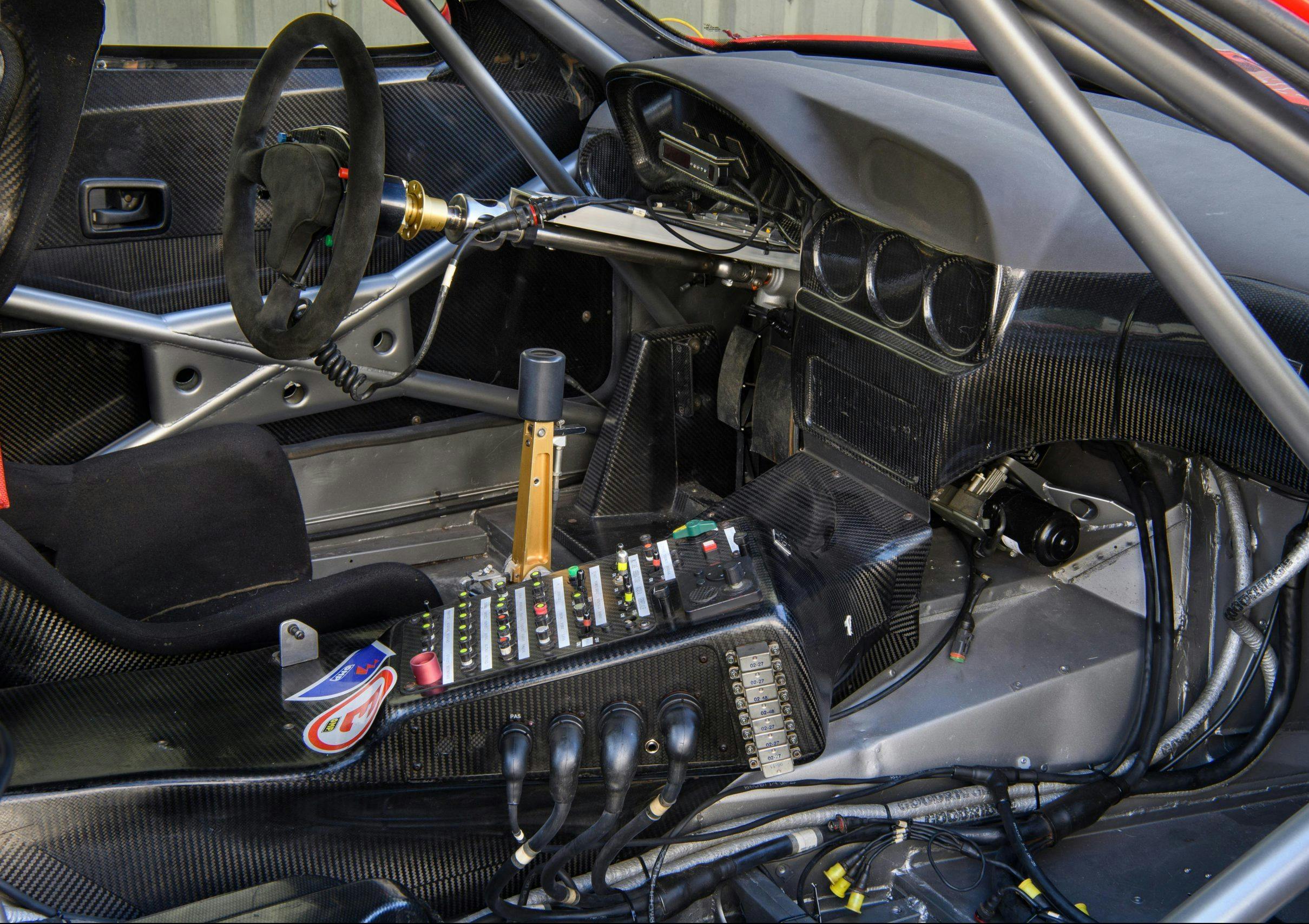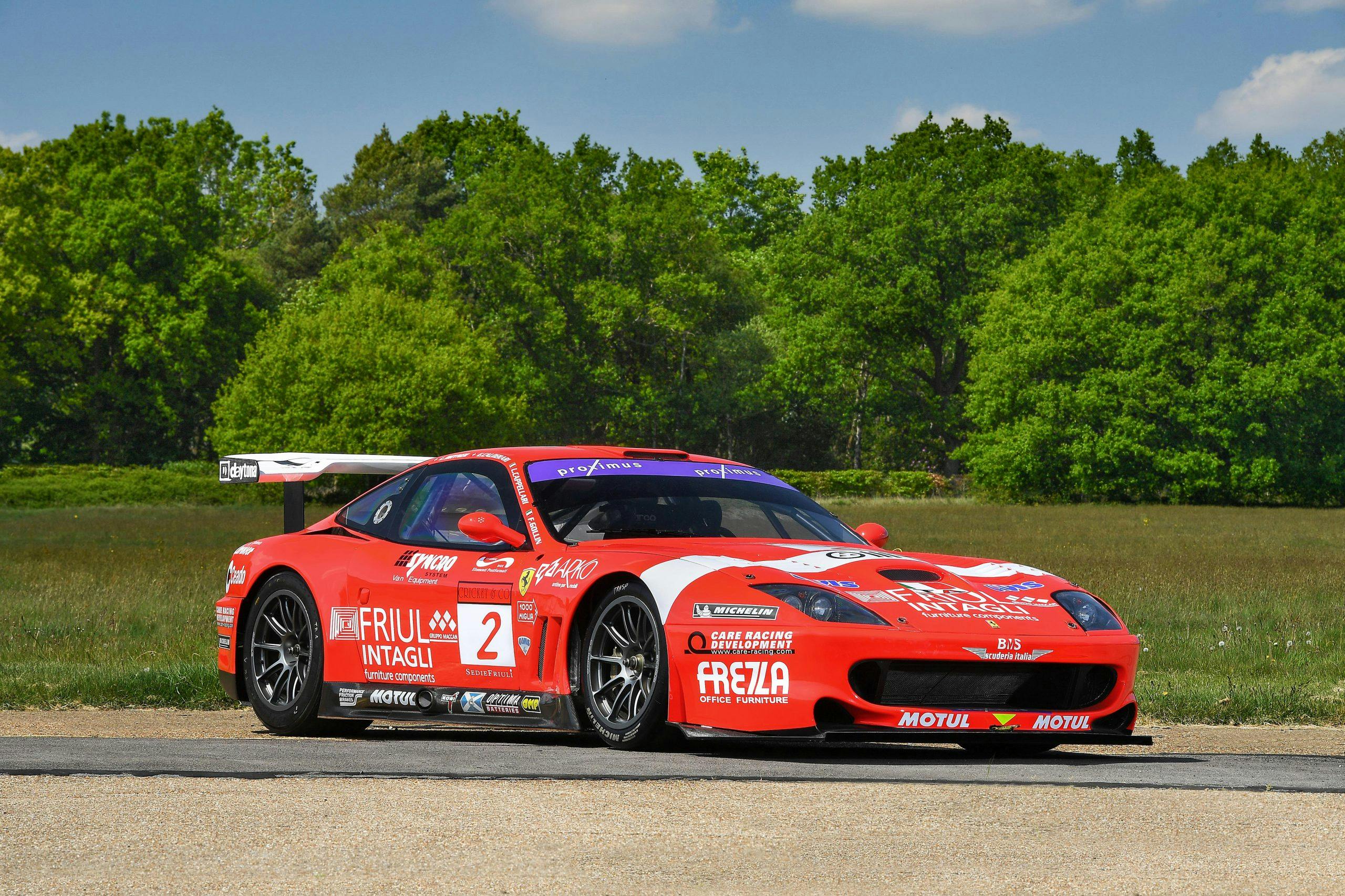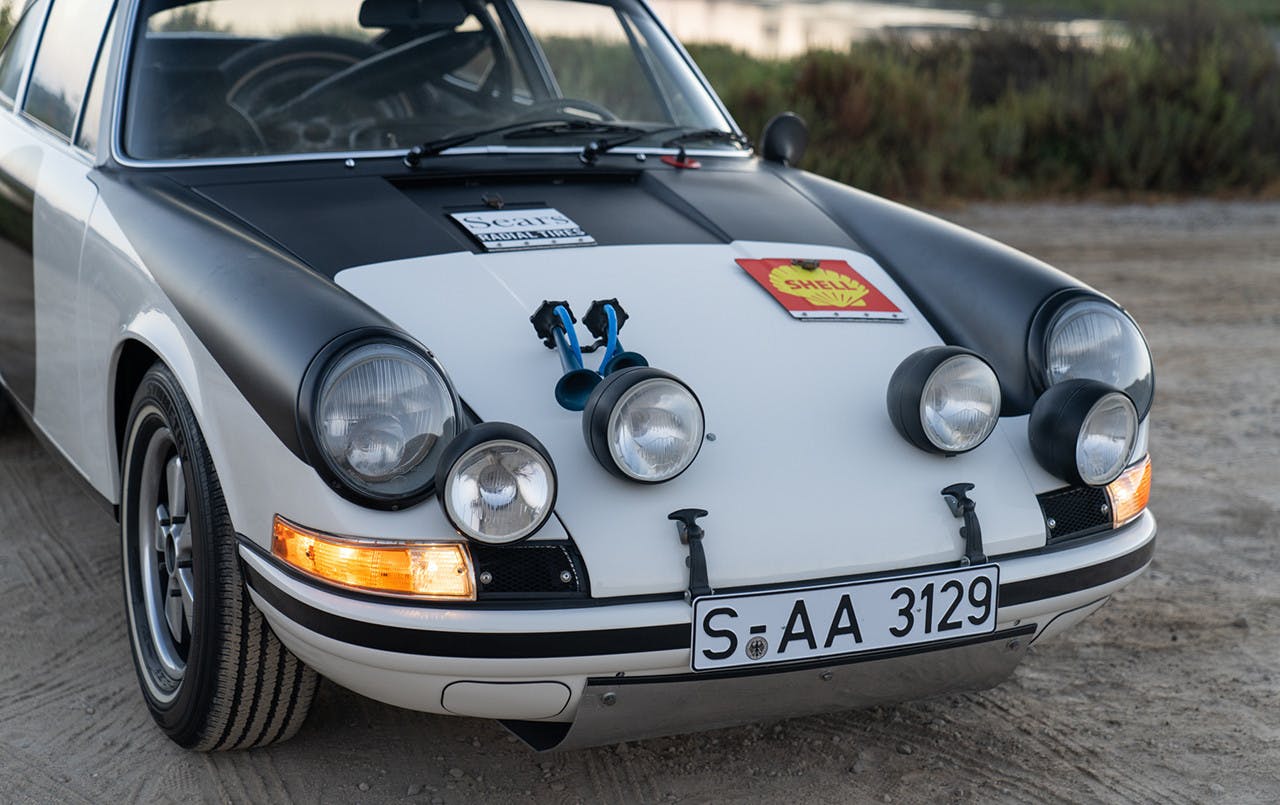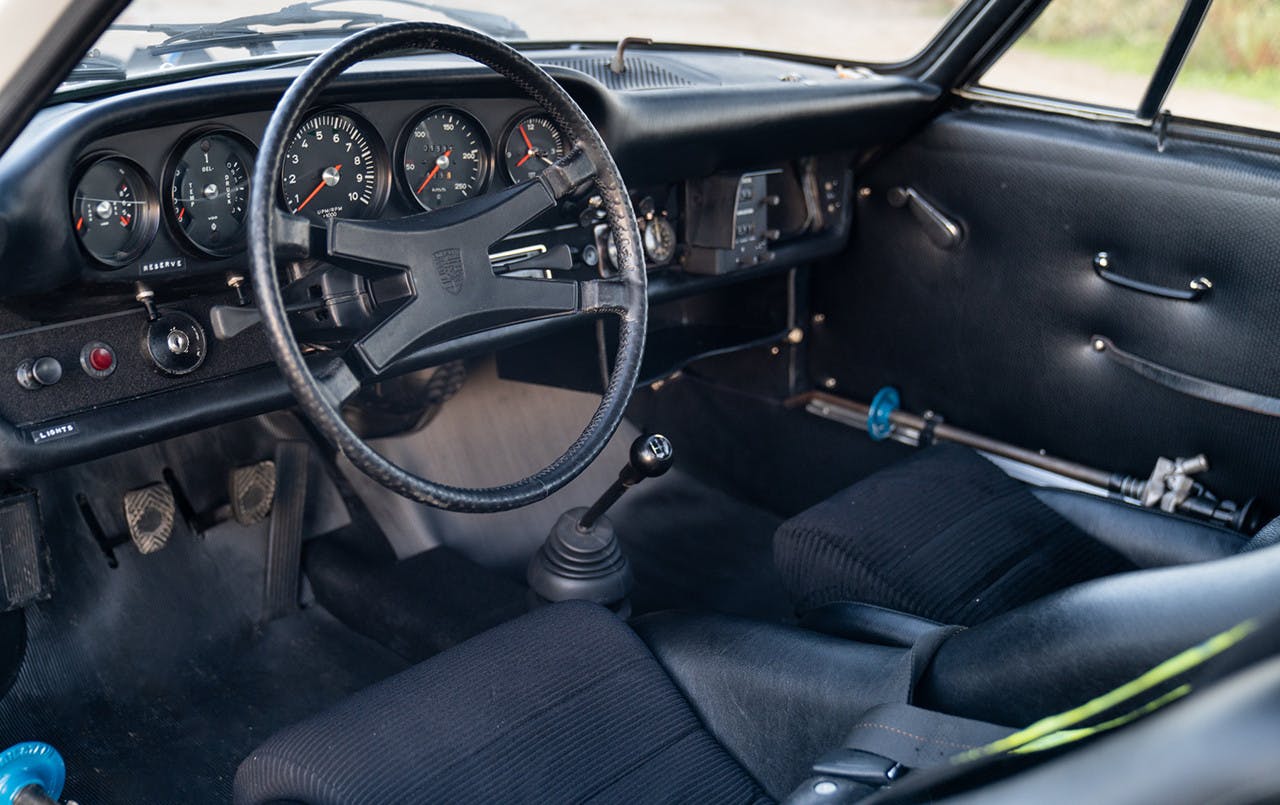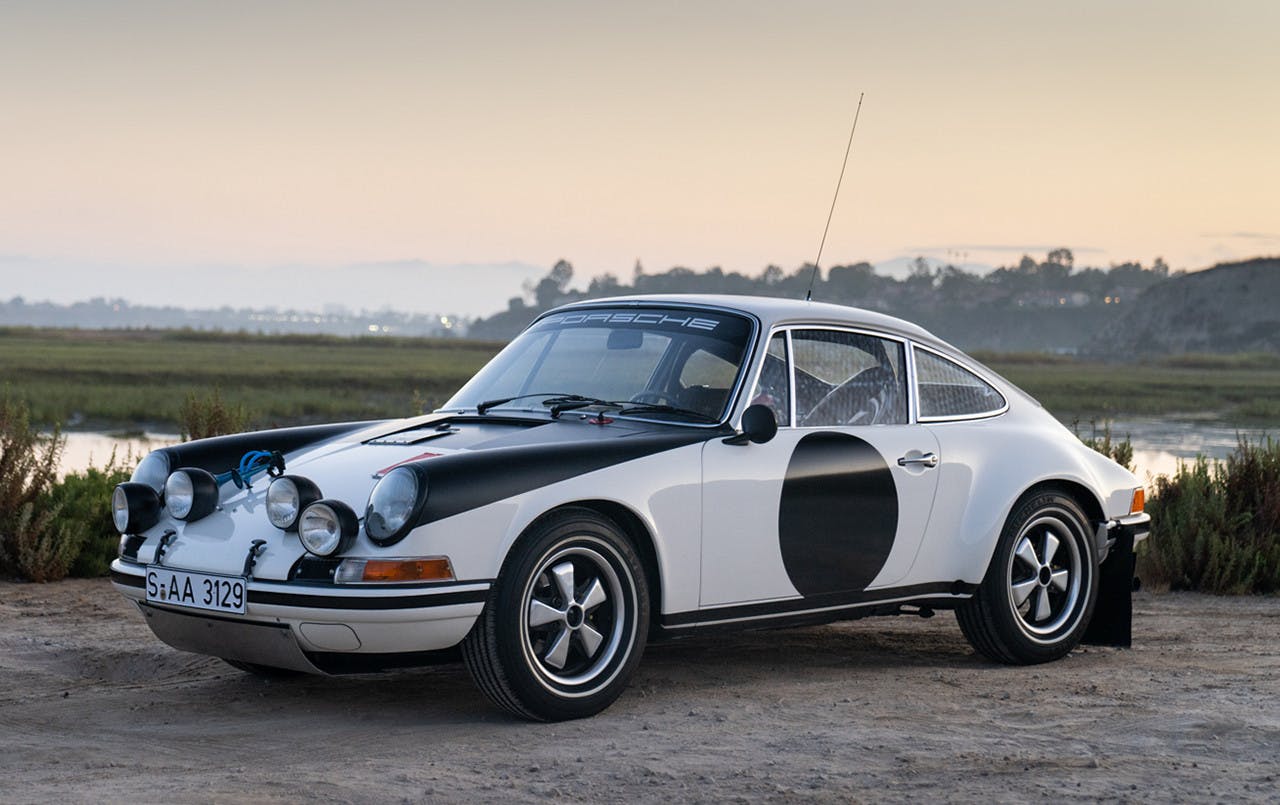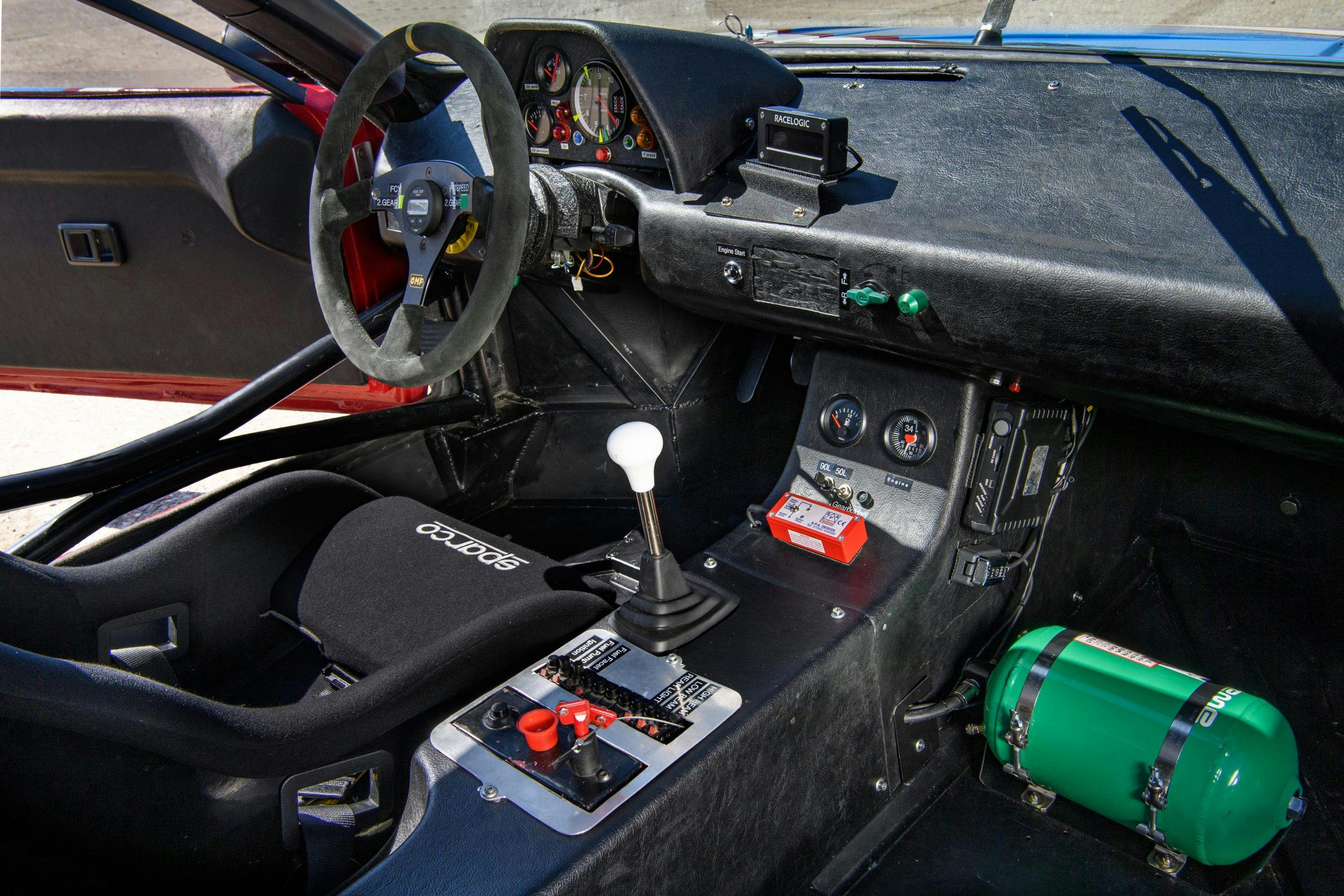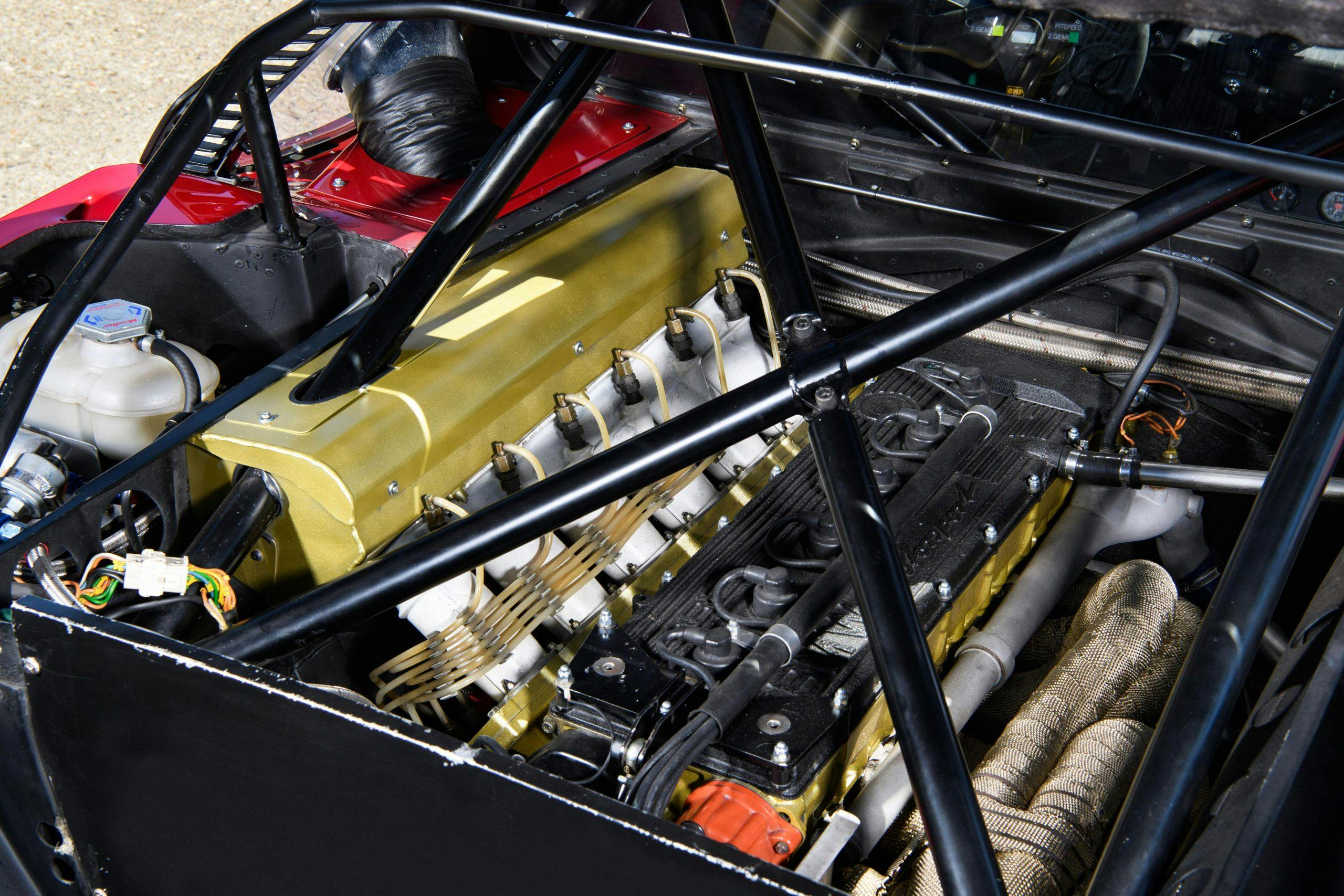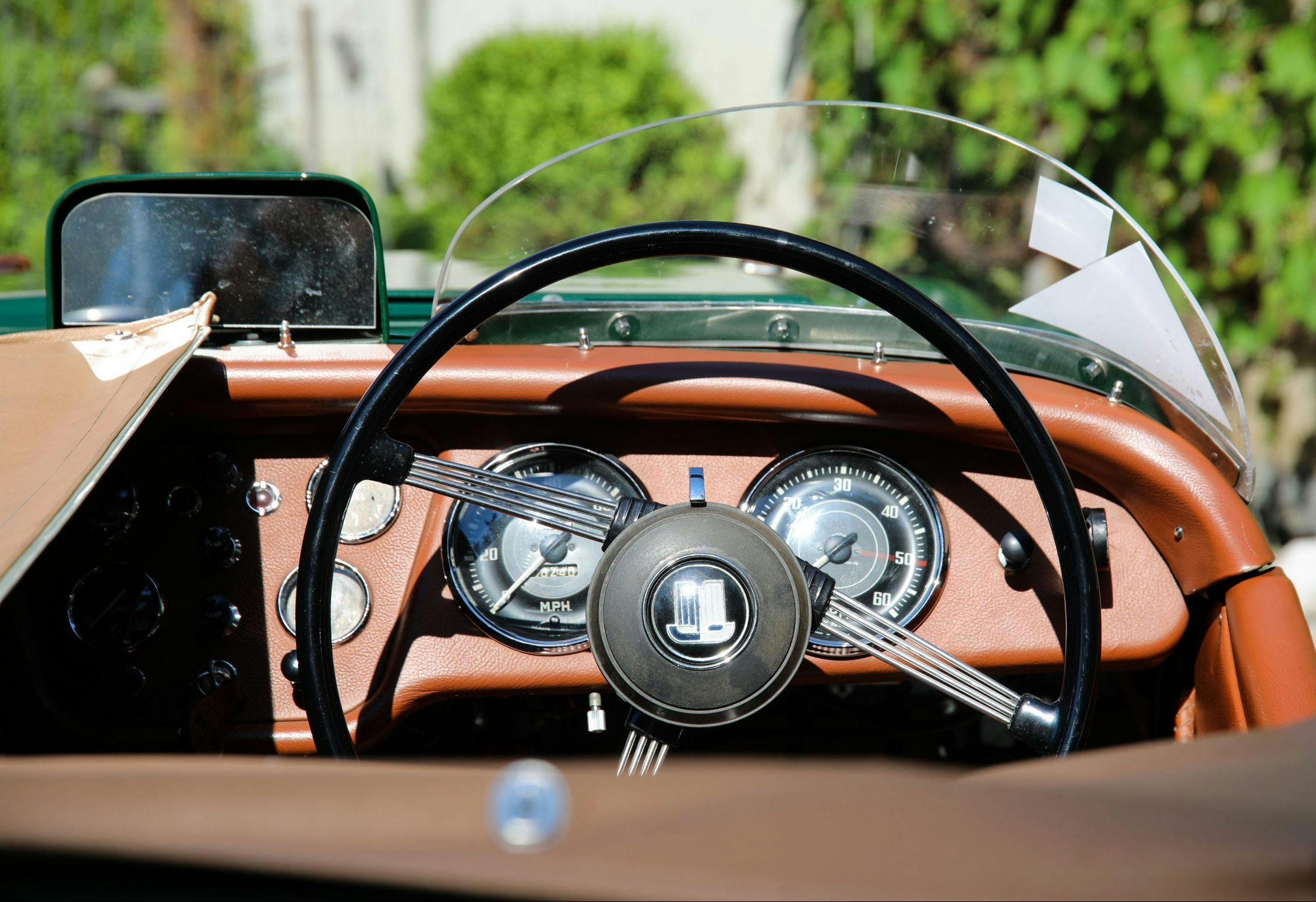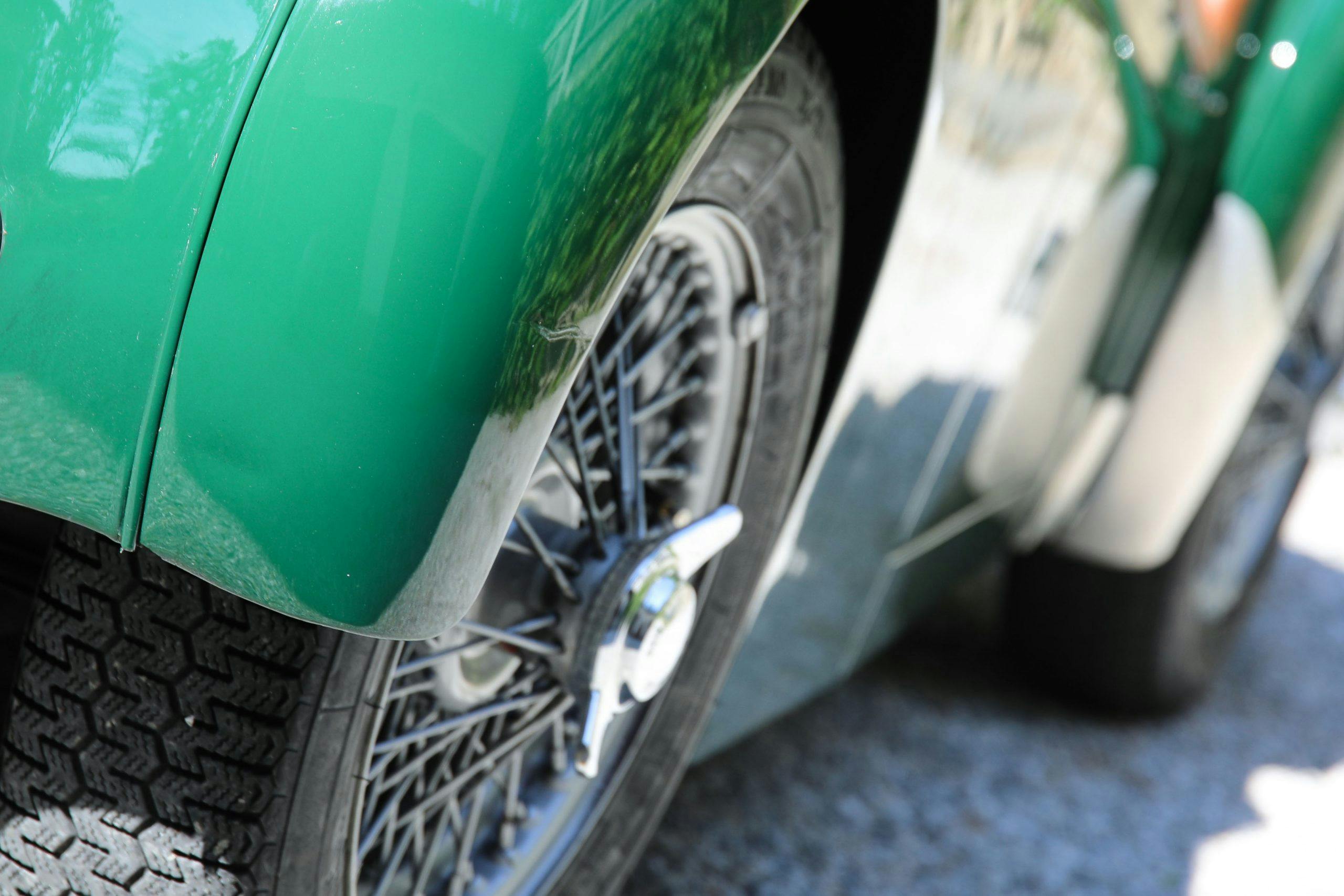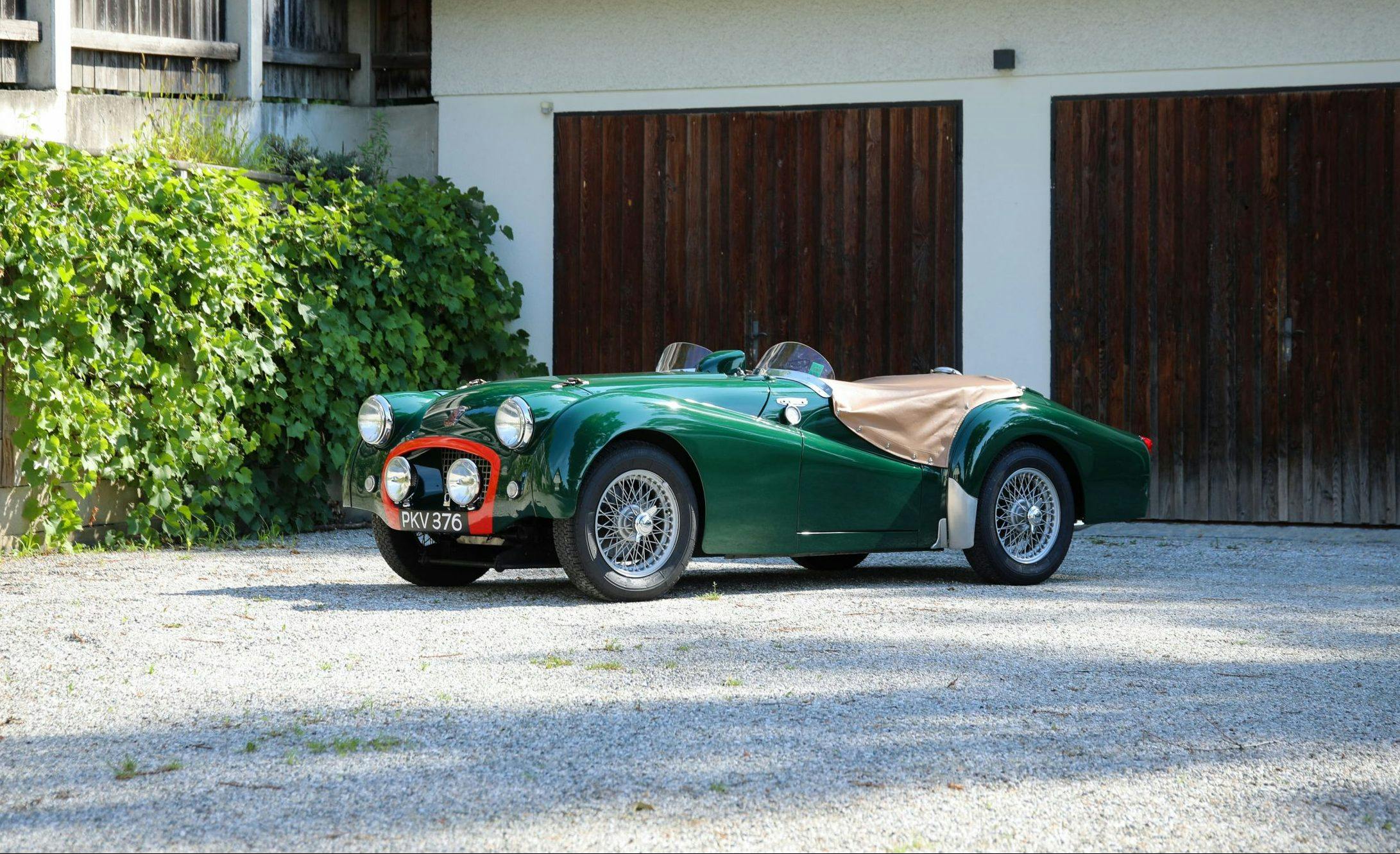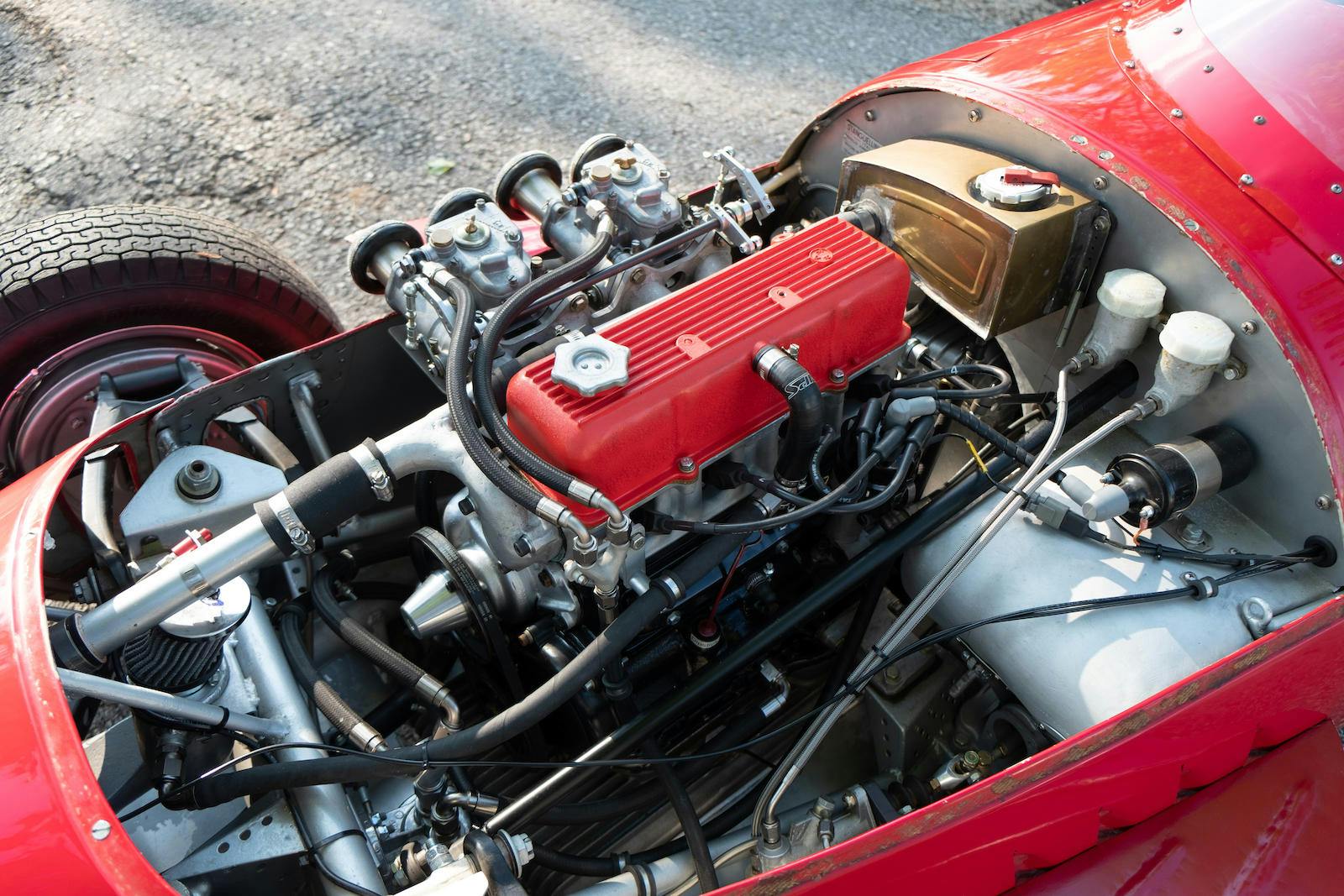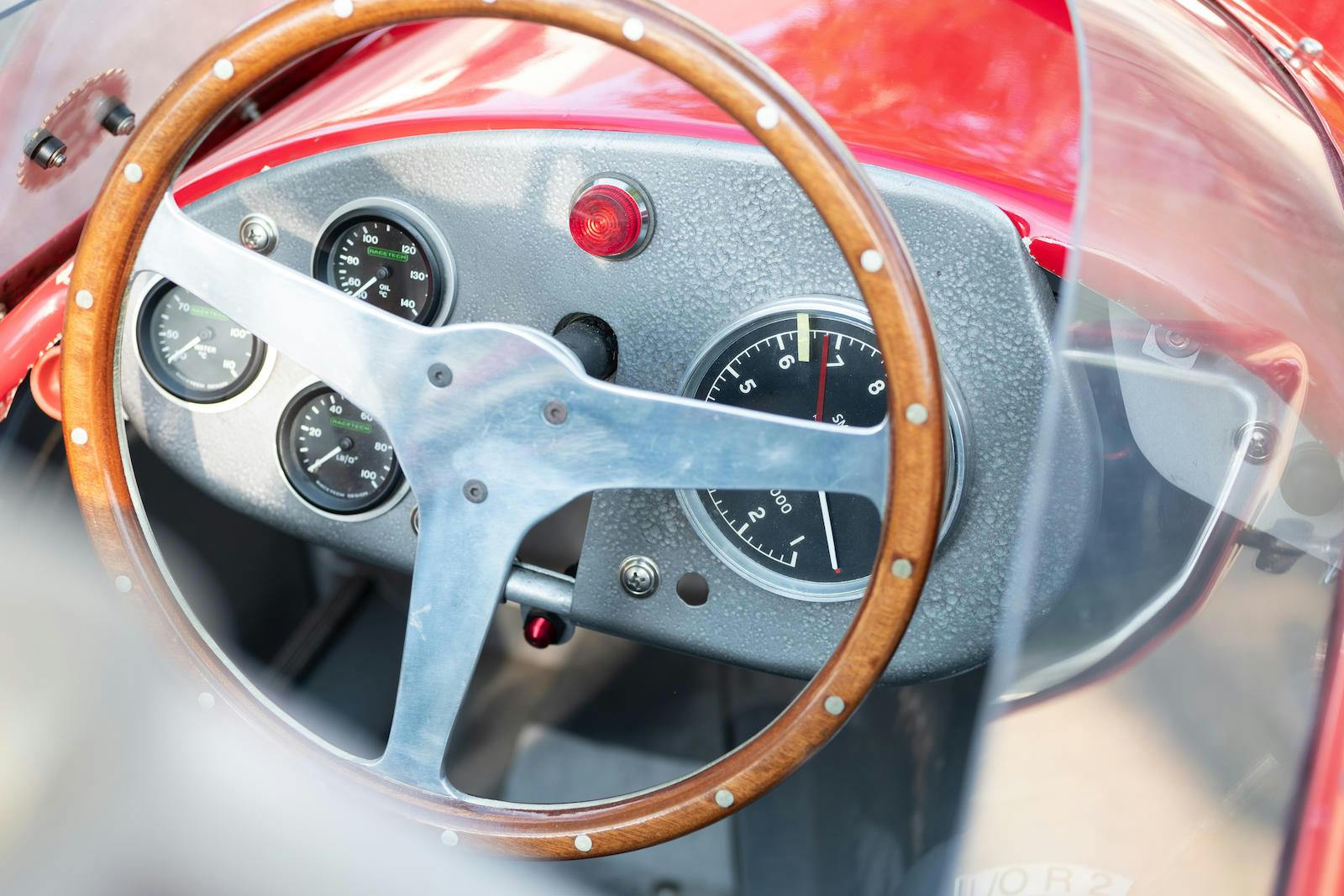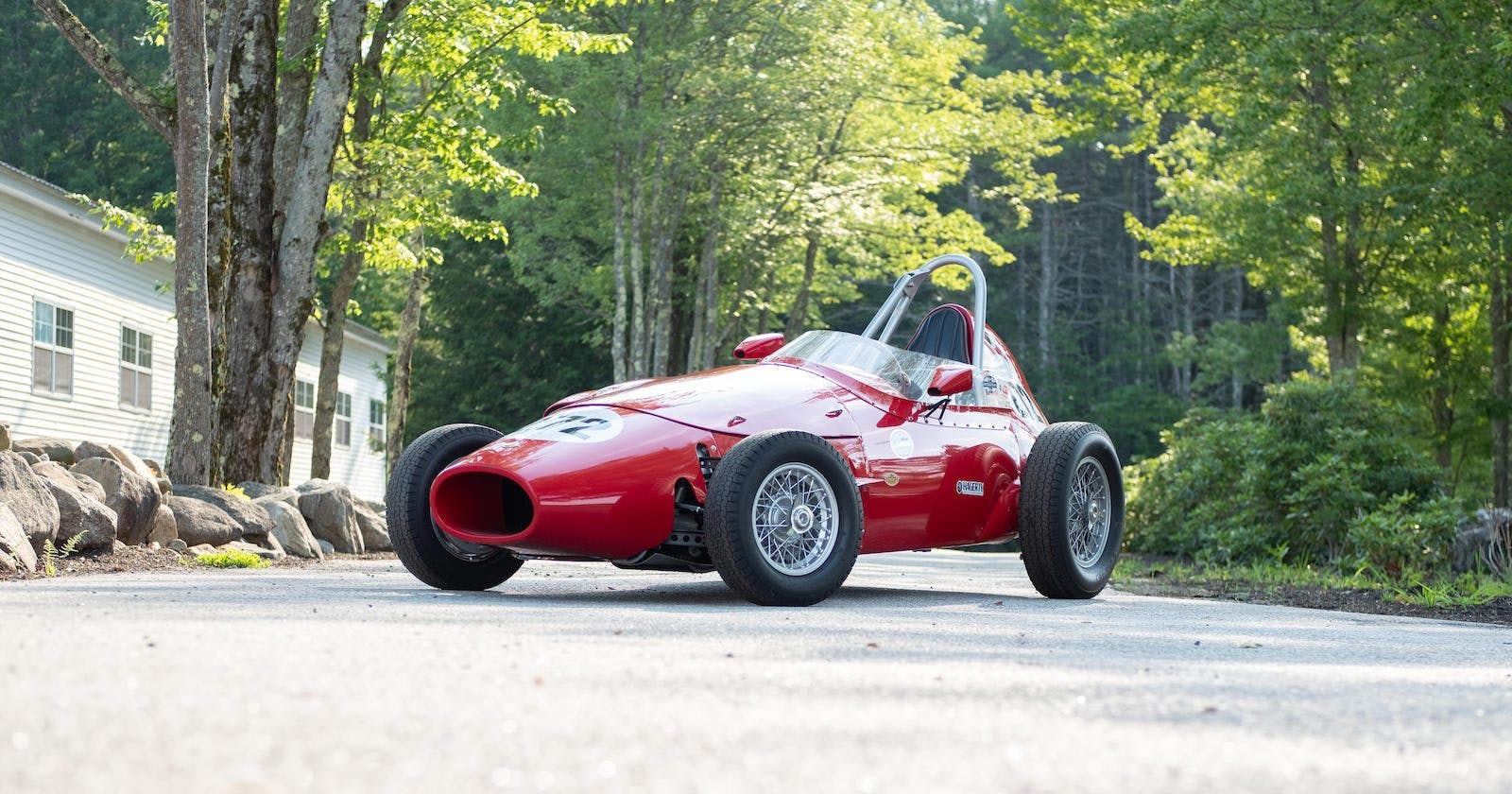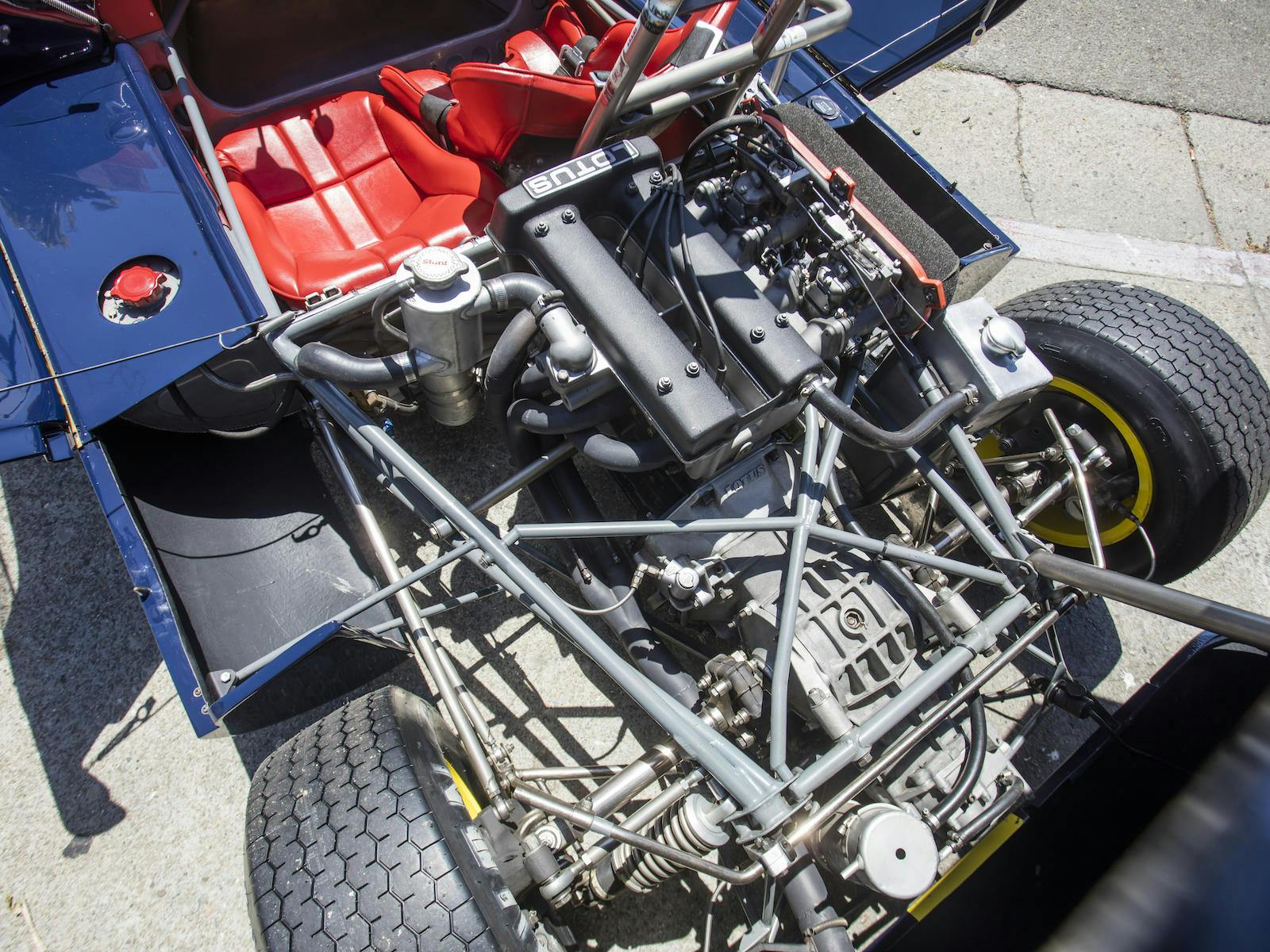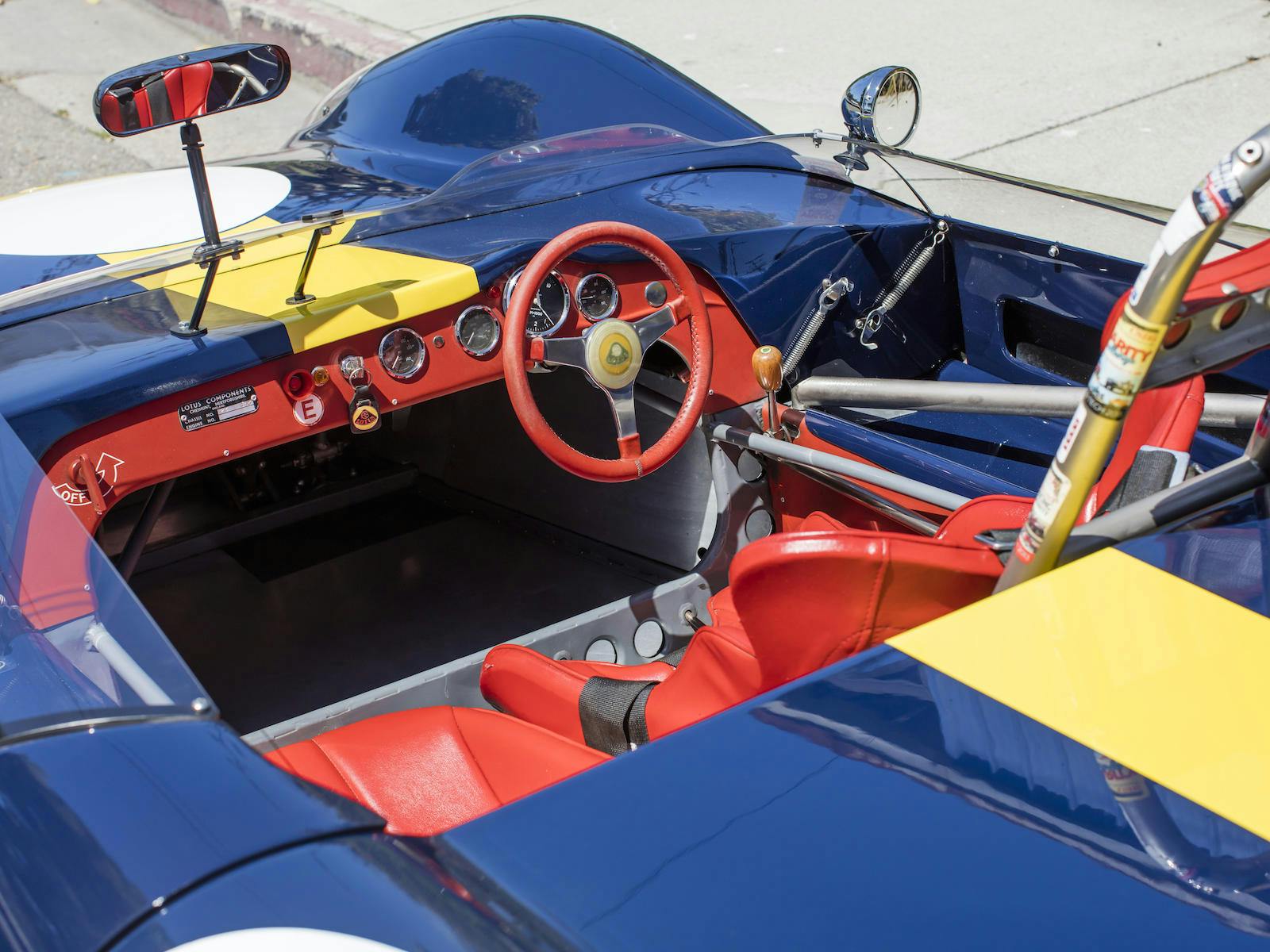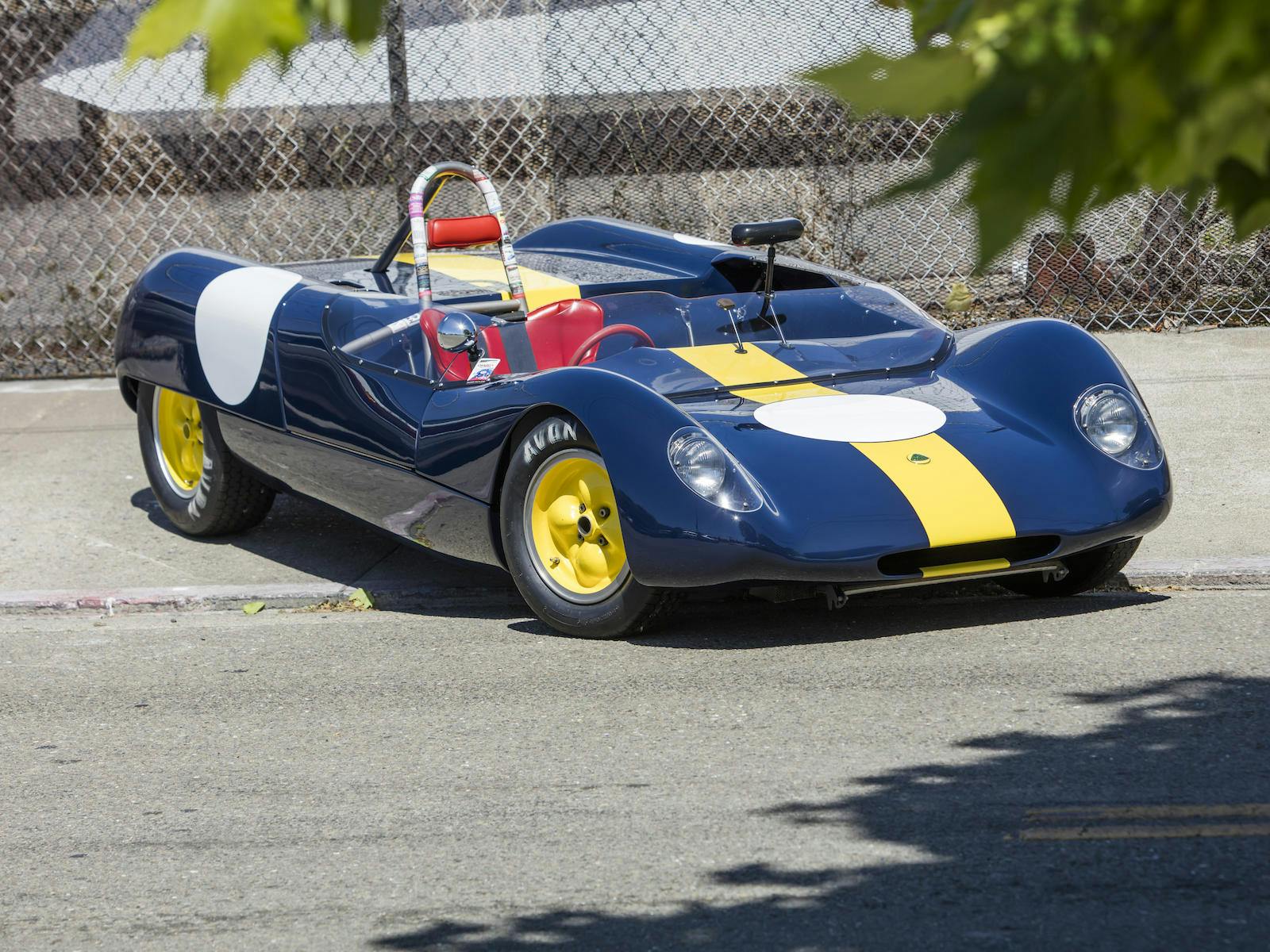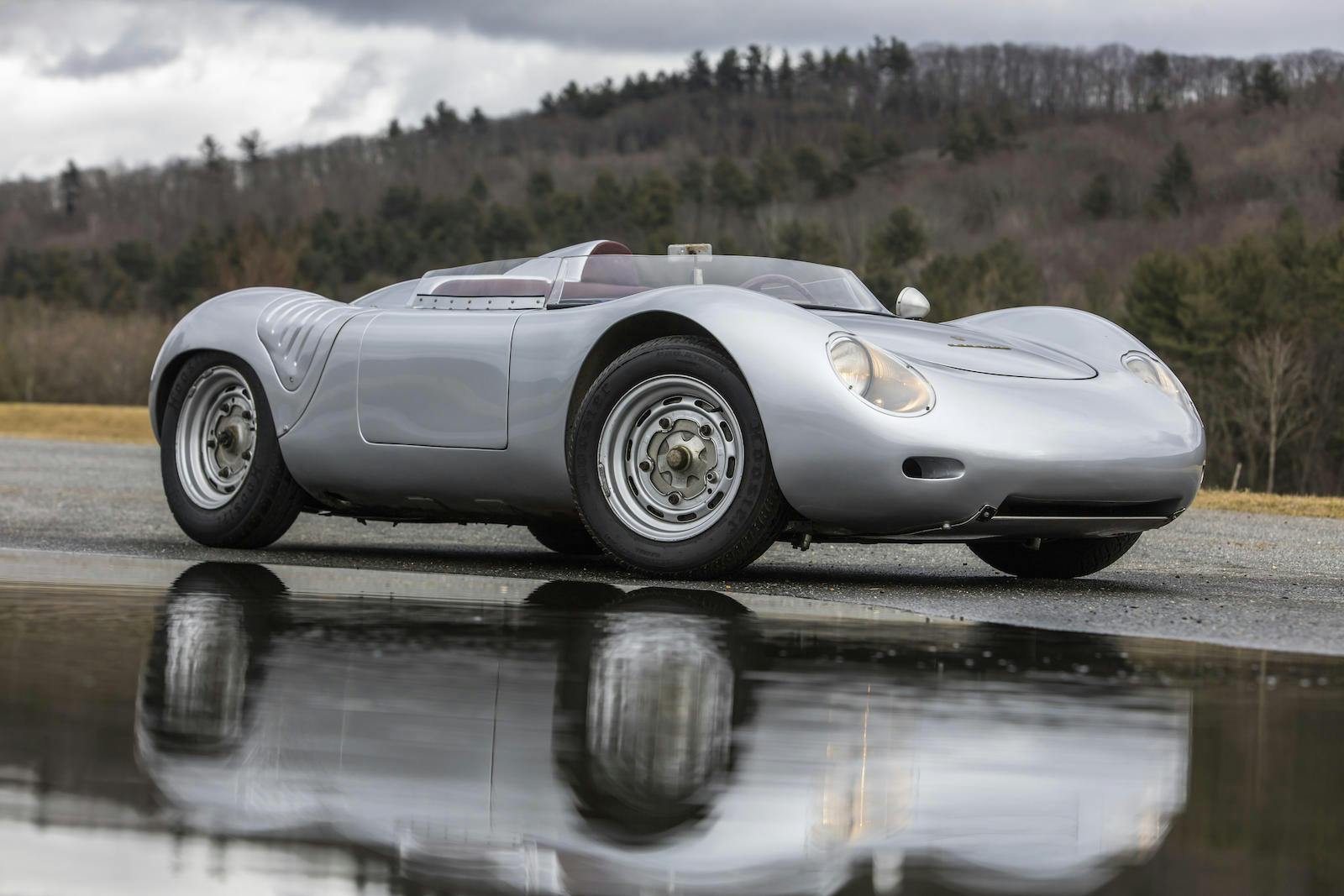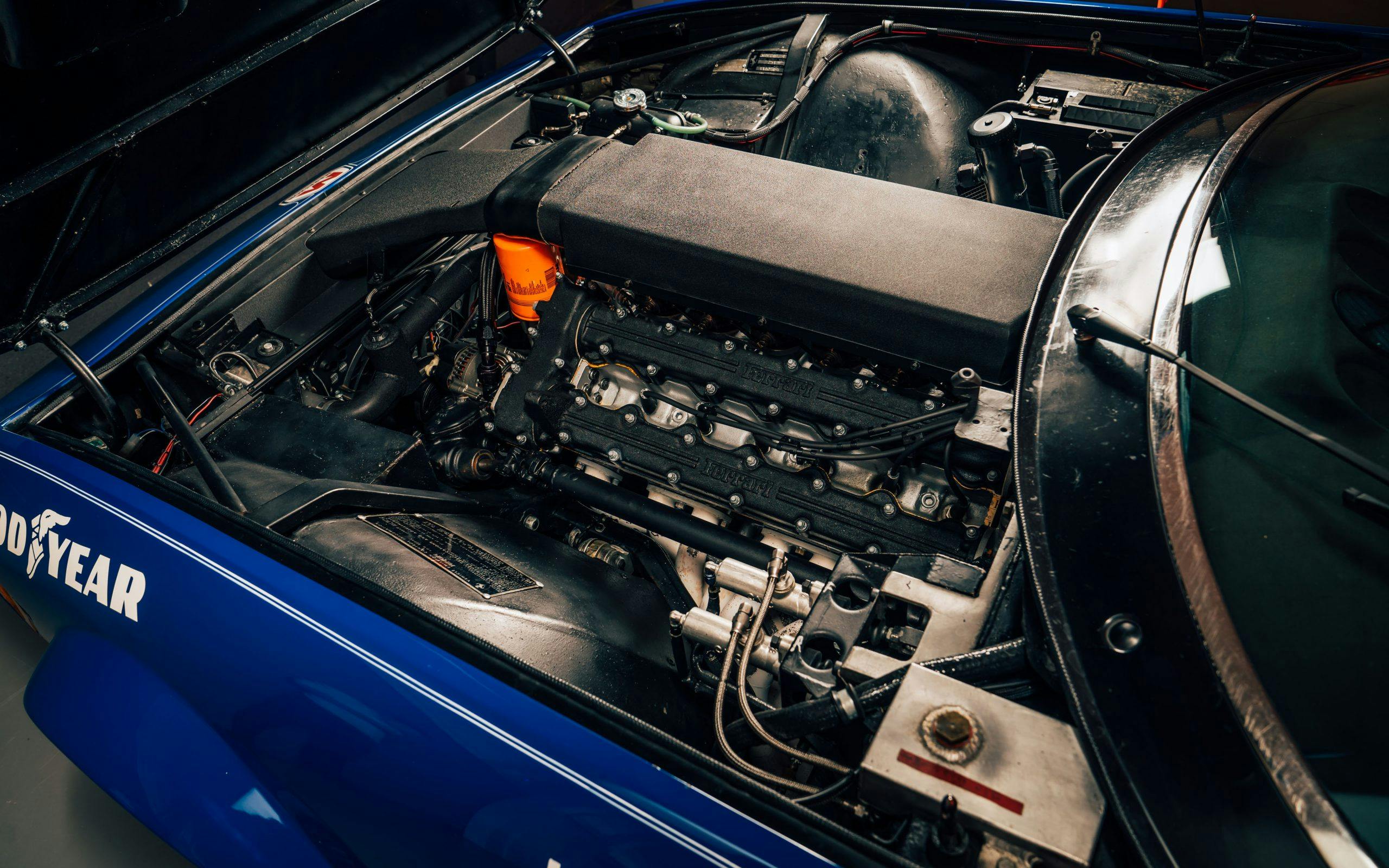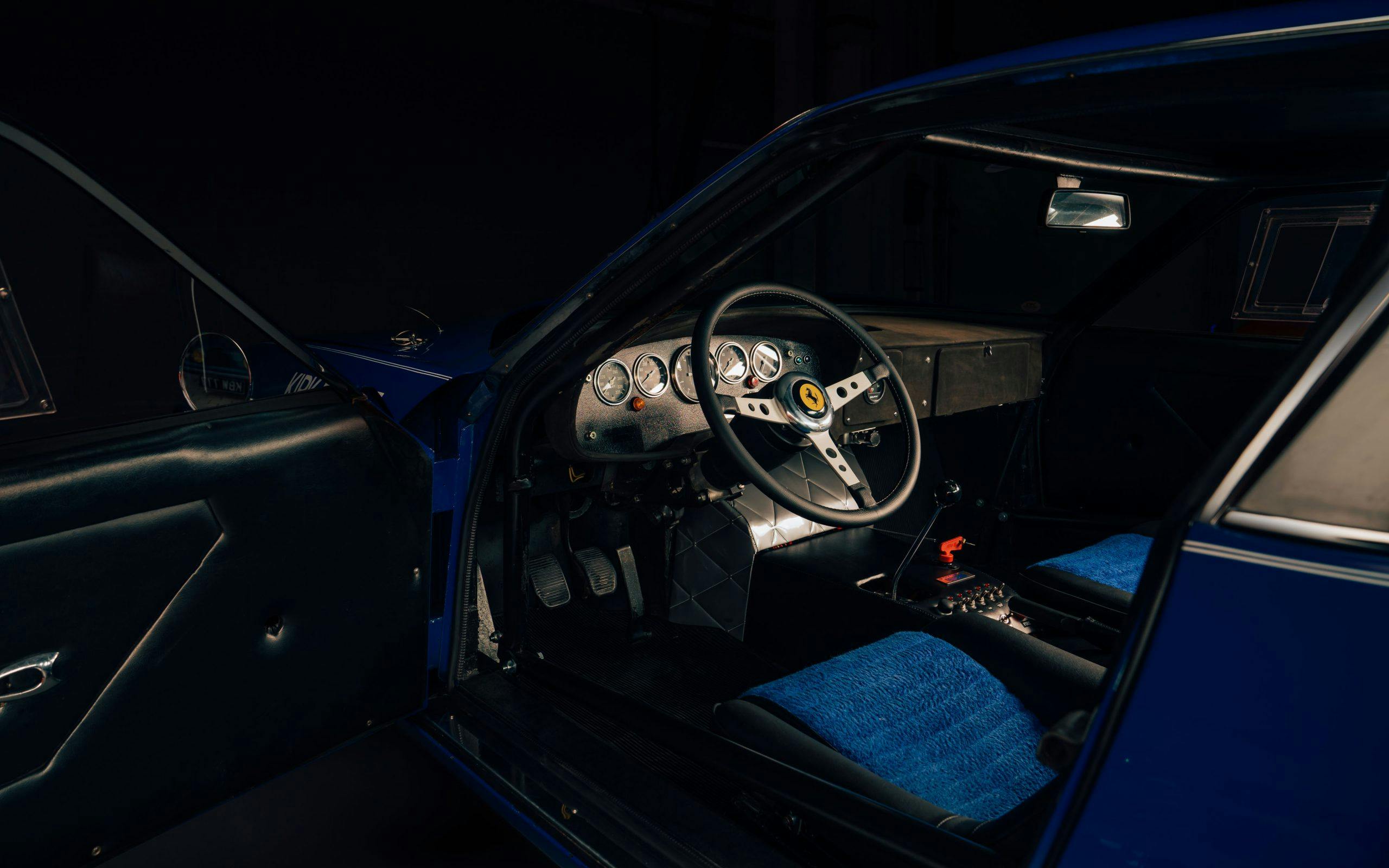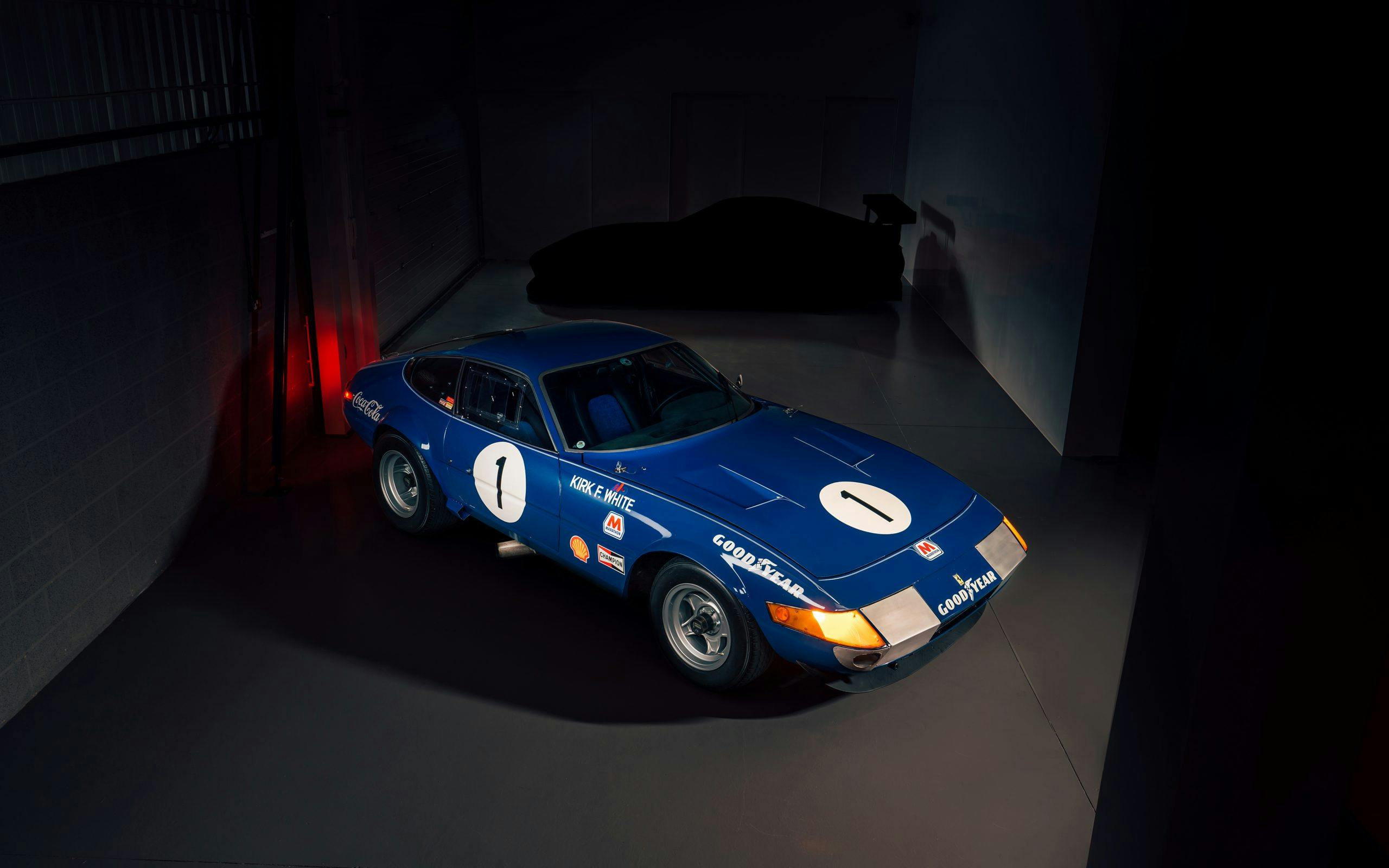8 great race cars up for sale in August’s 2020 Monterey Online auctions
Some races are coming back on the calendar but, sadly, the 2020 Monterey Historics isn’t one of them. We’re still thinking about race cars, though, because the Monterey auctions are still happening, albeit in a more limited and online capacity. As always, there are several significant or just downright cool cars to pique any racer’s interest. Here are the highlights.
2001 Ferrari 550 GT1
RM Sotheby’s, Lot TBA
Presale estimate: TBA
During the early 2000s, Ferrari and Michael Schumacher were a little busy embarrassing everybody in F1, so sports car racing wasn’t really a priority. Enter a British outfit called Prodrive, the same operation that ran Subaru’s World Rally Championship-winning team. Hired by a Swiss racing team “Care Group” to turn the Ferrari 550 Maranello into a racer, Prodrive gave it a larger 6.0-liter engine, wider carbon-fiber body panels, and a sequential gearbox, among plenty of other modifications.
Although earlier privateer 550s met with mediocre results, and despite Ferrari keeping a distance from the whole affair, Prodrive’s car was a real winner. It brought home titles in the LMES, FIA GT, and Italian GT Championships. According to RM Sotheby’s, this is the second out of examples 12 built. Its resume includes 14 class wins, overall victory at the 24 Hours of Spa and the 2004 FIA GT Championship title.
1971 Porsche 911 ST Rally Car
Gooding & Company, Lot 061
Presale estimate: $950,000 – $1,250,000
Although the 911 was mostly a road racer, it saw plenty of success on the world’s rally stages as well, including three straight wins at the Monte Carlo from 1968-70. For 1971, Porsche decided to tackle the tough East African Safari Rally, a 4000-mile slog through the punishing terrain and rough weather of Kenya, Uganda, and Tanzania. Porsche prepared five special 911 ST rally cars for the factory team, including three to run the event and two trainingwagens, a.k.a. practice cars.
The rally prep consisted of beefing up the body and frame, rear fender flares, extra oil capacity for the engine, revised gear ratios, higher ride height, roll bar, skid plates, dual spares, extra lighting, and timing equipment. Just 32 cars finished the East African Safari Rally that year, with the best placed Porsche 911 ST finishing fifth behind two Datsun 240Zs, a Peugeot 504, and a Ford Escort Twin Cam.
This car is one of the test cars used by the factory drivers to practice for the event. After the rally it sold to a privateer who converted it for circuit racing, but it has since been restored to its full works rally car glory.
1980 BMW M1 Procar
RM Sotheby’s, Lot TBA
Presale estimate: TBA
A support series for F1, the BMW M1 Procar Championship pitted Grand Prix aces against star drivers from sports car and touring car racing. Competing on a level playing field, they all drove identical BMW M1s modified with flares, a deep front splitter, rear wing, and a 470-hp engine (up from 277 in the standard road car). The series only ran for the 1979 and 1980 seasons, but afterward many M1 Procars ventured into proper international competition.
This one, for example, sold new to American racer Joe Crevier to race in the IMSA GTO class. It finished on the class podium five times during the 1981 season, and it ran at both Daytona and Sebring. It then raced in IMSA into the 1983 season, before being restored in the 2000s.
1955 Triumph TR2 Works Competition Car
RM Sotheby’s, Lot TBA
Presale estimate: TBA
Standard Triumph’s first proper sports car, the TR2 cost only a little more than an MG but was far more modern and offered genuine 100-mph performance. It’s no wonder, then, that Triumph took it racing. A TR2 won the RAC Rally in 1954, and in 1955 the Triumph works team took three modified TR2s to Le Mans with modified windscreens and disc brakes.
This car is one of those three works Triumphs, and although the 1955 Le Mans race is mostly remembered for playing host to the worst accident in racing history, the TR2 crossed the finish in 14th place overall (5th in class) with Ninian Sanderson and Bob Dickson driving. A Bristol won the class, but this was the best-placed of the Triumphs. Its teammates finished in 15th and 19th places. Factory race cars of any kind rarely come to market, but that 19th place car sold at an auction in the U.K. last November for a record £258,750 (about $331,000 at the time).
1959 Stanguellini Formula Junior
Bonhams, Lot 32
Presale estimate: $125,000 – $150,000
Like the later Formula Vee and Formula Ford, Formula Junior started as an affordable way for aspiring racers to get into wheel-to-wheel single-seater competition. Unfortunately, the spirit of affordability was mostly gone by 1963 and the mid-engine British Lotuses were nearly unstoppable, so the series died off that year.
The early days of Formula Junior, on the other hand, were a mostly Italian affair. Stanguellinis were among the most successful, using mostly Fiat bits underneath aluminum skin with the looks of a scaled down Maserati 250F Grand Prix car. This one uses a Fiat 1100 engine as well as a Fiat four-speed and drum brakes with the rears mounted inboard.
1964 Lotus 23B
Bonhams, Lot 75
Presale estimate: $90,000 – $120,000
After the Lotus 22 steamrolled its competition in Formula Junior racing, Colin Chapman, not wanting to mess with success, adapted the 22 for sports car racing. A wider spaceframe, two-seater fiberglass body, some lights, and voila—the Lotus 23.
Like most Lotus race cars in the 1960s the 23 ran with all sorts of engines in a variety of different classes, from tiny 750-cc Coventry Climax engines to 1000-cc Cosworths and 1600-cc Lotus Twin Cams.
All were more than enough motor for a car weighing barely 1000 pounds, and 23s were a scourge of small displacement sports car racing for much of the 1960s. This one has a 196-hp Twin Cam engine coupled to a Hewland five-speed, and according to Bonhams it raced in period at Snetterton, Brands Hatch, and Silverstone, where it won a race in 1968.
1959 Porsche 718 RSK Spyder
Bonhams, Lot 53
Presale estimate: $2,800,000 – $3,200,000
An evolution of the 550A Spyder, the 718 RSK continued Porsche’s giant-killing ways through the rest of the 1950s and into the ‘60s. According to Bonhams, this example sold new to an industrialist in New Jersey who hired Porsche dealer and racer Bob Holbert, fresh from winning his class at Sebring in another 718 RSK, to do the driving.
Holbert notched wins at the 1959 Bahamas Speed Week in the RSK and it was a frequent podium finisher in SCCA racing throughout the 1959 and 1960 seasons. It then got restoration work in the 1980s and 1990s, and is now represented with just three owners from new.
1971 Ferrari 365 GTB/4 Daytona Competizione
RM Sotheby’s, Lot TBA
Presale estimate: TBA
Rarer than a 250 GTO, this car is one of just 25 365 GTB/4 Daytonas modified for competition use in period, including eight cars built up by privateers. Chassis 14065 started out as a standard street car, in classic Daytona colors of red over tan, but in 1972 it sold to Kirk F. White, who had Holman-Moody prep it for that year’s 12 Hours of Sebring.
For power it borrowed the Traco-modified 450-hp engine from another Daytona that had just won the cross-country Cannonball Rally. The Ferrari got brakes from a Mk IV Ford GT40. Fender flares, centerlock wheels, heavy-duty suspension, quick-release fuel filler, and a fresh coat of blue paint rounded out the package.
At Sebring, it qualified on pole and was the fastest Daytona on track but there was one unfortunate oversight – the stock driveshaft bolts couldn’t deal with those 100 extra horses and gave up after 53 laps, so the car was out of the race. Sadly that was also the end of its competitive career, but more recently it has had a mechanical freshening and looks as ready to race as ever.

